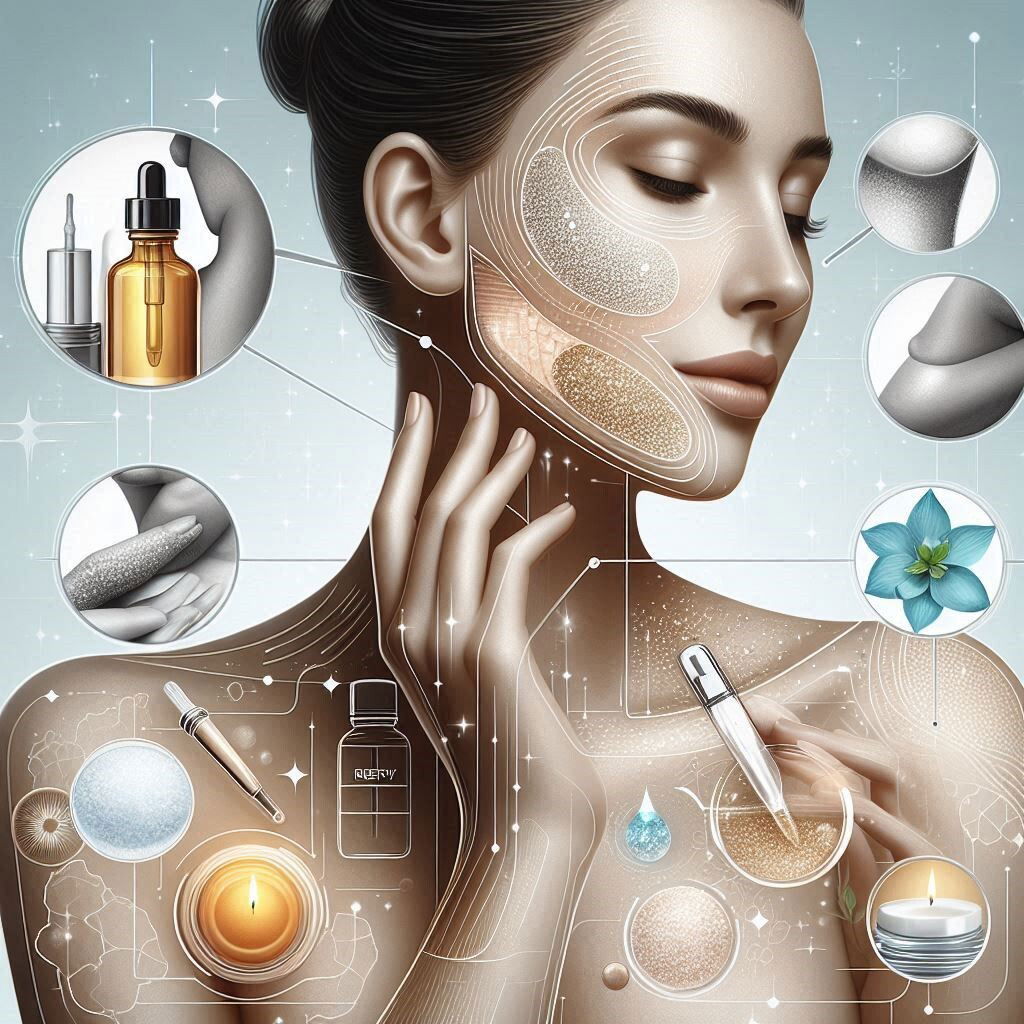Skin Peeling: Benefits, Methods, and Tips

Introduction
Hundreds of thousands of people are eager to achieve perfect skin. There are dozens of ways to make skin smoother and perfect, and skin peeling is one of the most popular processes. This ultimate guide will tell you more about this procedure and will help you to find out about the most efficient method that will be suitable for you. If you are new to skin peeling and have no other experience, you will be pleased to read about all benefits, methods, and answers to the most popular questions.
What is a skin peeling?
A skin peeling, or chemical peel, is a dermatological method that helps people to achieve more perfect skin. A chemical solution that is applied on the skin helps to remove the upper layer of the skin and to stimulate the growth of a new one. Skin peeling can be used for solving various skin problems: acne scars, wrinkles, hyperpigmentation, sun-damaged skin, etc.
Benefits of skin peeling
Skin peeling has lots of benefits, and that is why it is the most popular skin procedure. Some of the advantages of skin peeling include:
Smoother Skin. Skin peeling helps to make skin smoother and removes rough patches;
Reduction of Fine Lines and Wrinkles. Skin peeling stimulates collagen production and makes fine lines and wrinkles less noticeable;
Minimization of Acne and Scarring. Skin peeling exfoliates the top layer of the skin and this helps to reduce acne and scars;
Even Tone. This procedure allows people to get rid of hyperpigmentation and sun spots, which makes skin complexion even;
Glow. Dead skin is removed, and that is why your skin looks healthier and shinier.
Methods of Peeling
There are various skin peeling methods, and the most popular ones are:
1. Chemical Peels Light Peels:
Use mild acids like alpha-hydroxy acids (AHAs) to exfoliate the outermost skin layer. Medium Peels: Use stronger acids like trichloroacetic acid (TCA) to reach the middle layers of skin. Deep Peels: Use phenol or high-concentration TCA for deep skin exfoliation.
2. Microdermabrasion
A mechanical exfoliation method using fine crystals or a diamond-tipped wand to remove the outer skin layer.
3. Dermabrasion
A more intense mechanical exfoliation using a rotating instrument to remove deeper skin layers, often used for scars and deep wrinkles.
4. Enzyme Peels
Use natural enzymes from fruits like papaya and pineapple to gently exfoliate the skin.
5. Laser Peels (Laser Resurfacing)
Use laser technology to remove skin layers with precision, stimulating collagen production and new skin growth.
6. Retinoid Peels
Use retinoids, derived from vitamin A, to accelerate cell turnover and peel the skin.
7. Glycolic Acid Peels
Use glycolic acid, an AHA, for effective exfoliation and skin rejuvenation, suitable for various skin types.
8. Salicylic Acid Peels
Use salicylic acid, a beta-hydroxy acid (BHA), to penetrate and exfoliate oily and acne-prone skin.
9. Jessner's Peel
A combination of lactic acid, salicylic acid, and resorcinol to treat sun damage, fine lines, and acne scars.
10. TCA (Trichloroacetic Acid) Peels
Use TCA at varying strengths to treat pigmentation, wrinkles, and fine lines.
Skin peeling preparation
There are several ways to prepare your skin for the peel:
Avoid Sun Exposure: In the weeks leading up to your peel, limit your exposure to the sun and use sunscreen regularly.
Discontinue Certain Skincare Products: Do not use products that contain retinoids, exfoliants, and other harsh ingredients a few days before your peel.
Hydrate Your Skin: Keep your skin hydrated and use a good moisturizer.
Aftercare Tips for Skin Peeling
Here are some tips to help you properly care for your skin after the peel and get the desired effect:
Moisturize Regularly: To heal your skin faster, you should regularly use a proper moisturizer.
Avoid Sun Exposure: Do not forget to protect your skin from the direct sun by wearing broad-spectrum sunscreen daily.
Do Not Pick at Your Skin: Allow the old skin to shed off naturally.
Use Gentle Skincare Products: Avoid the use of harsh exfoliants, and other products that can irritate your skin.
Frequently Asked Questions
1. ‘Is the procedure safe?’
Yes, it is, especially if you follow the pre- and post-treatment care instructions.
2. ‘How often can I do the peeling?’
It depends on the type of the procedure and your individual characteristics. Usually, superficial peels can be performed every few weeks, while deep peels require waiting periods of several months to a year.
3. ‘Will I have downtime?’
It also depends on the type of the peel. Superficial ones require little to no downtime, while medium and deep peels make your skin very sensitive, and you may need to stay indoors for several days to several weeks.
4. ‘I have acne. Can I do this procedure?’
Yes, you can, but first, you need to consult with your dermatologist on the best option for your condition.
5. ‘Are there any side effects?’
Mainly, they are mild and may include such as redness, tingling, and crusting of the skin. Common side effects include redness, swelling, and peeling – these usually go away in a few days to weeks. Severe side effects, such as scarring and infection, are less common.
6. How do I Choose the Right Peel for my Skin?
Choosing the right peel will depend you’re your skin type, the appearance and location of the scars, and the expected result after the treatment. The best way to understand which peel will be good for your skin is to consult a dermatologist.
Conclusion
Skin peeling is a popular and effective treatment for having the smooth and youthful skin you have been longing for. Whether you choose a chemical or laser or any other type of peeling method, you should be aware of how long the recovery time is and how to take proper care of your skin before and after the treatment. The information provided in this paper should give you a brief understanding of the available treatment methods, the beneficial effects of skin peeling, and proper skin care.
